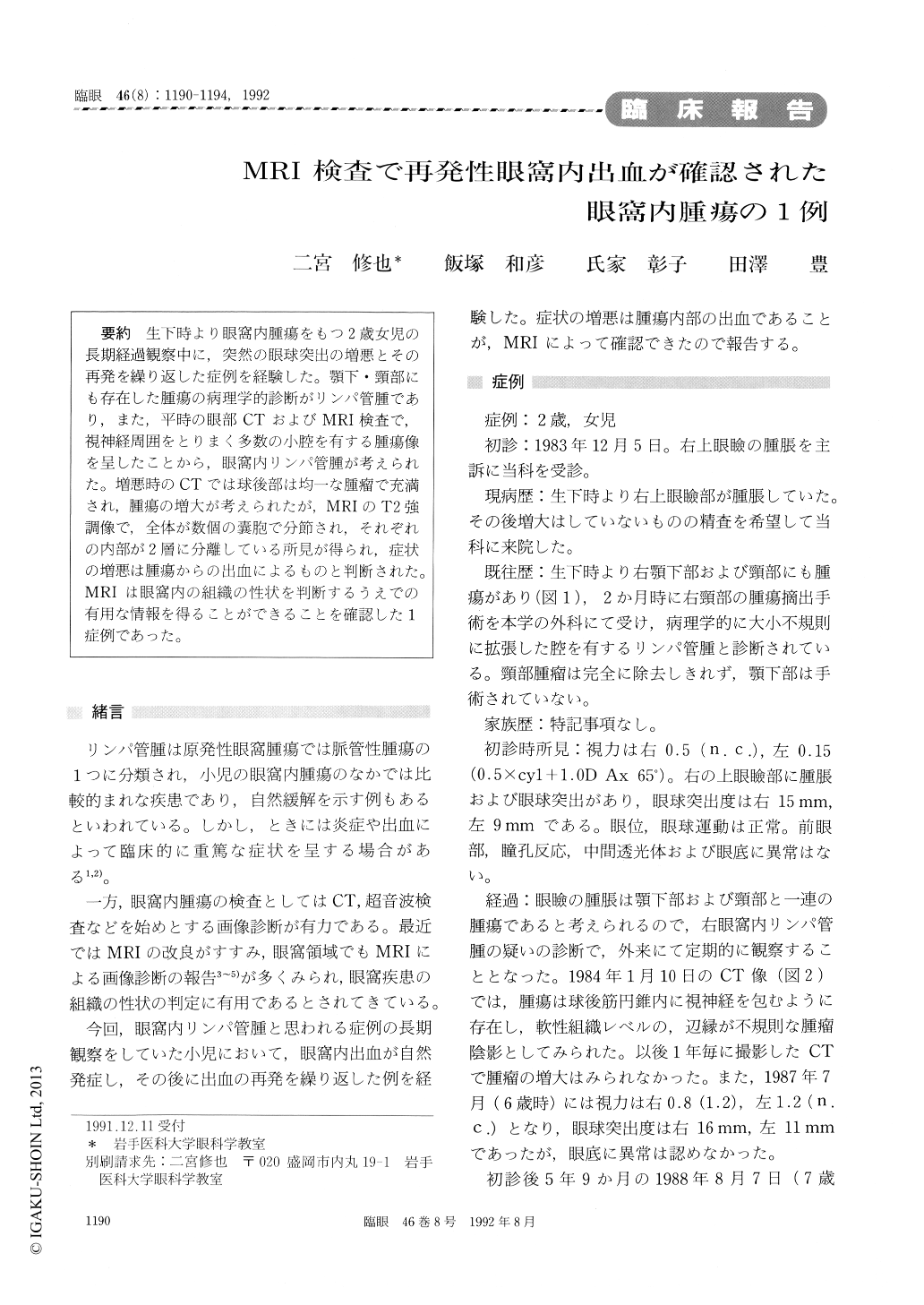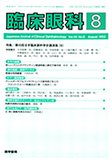Japanese
English
- 有料閲覧
- Abstract 文献概要
- 1ページ目 Look Inside
生下時より眼窩内腫瘍をもつ2歳女児の長期経過観察中に,突然の眼球突出の増悪とその再発を繰り返した症例を経験した。顎下・頸部にも存在した腫瘍の病理学的診断がリンパ管腫であり,また,平時の眼部CTおよびMRI検査で,視神経周囲をとりまく多数の小腔を有する腫瘍像を呈したことから,眼窩内リンパ管腫が考えられた。増悪時のCTでは球後部は均一な腫瘤で充満され腫瘍の増大が考えられたが,MRIのT2強調像で,全体が数個の嚢胞で分節され,それぞれの内部が2層に分離している所見が得られ,症状の増悪は腫瘍からの出血によるものと判断された。MRIは眼窩内の組織の性状を判断するうえでの有用な情報を得ることができることを確認した1症例であった。
We observed a female child with severe andrecurrent exophthalmos in her right eye from 2 till9 years of age. The exophthalmos had been noticedduring early infancy. We strongly suspected orbitallymphangioma as submandibular and cervicaltumors, present since birth, had been diagnosedhistopathologically as lymphangioma and as CTand MRI of the orbit during remissions showedhoneycomb-like pattern surrounding the opticnerve. The exophthalmos during the phase of exac-erbation was thought to be due to growth of thetumor which filled the retrobulbar spacehomogenously by CT findings. However, T2-weigh-ted MRI showed an enlarged tumor consisting ofnumerous cysts with formation of niveau, showingthe exophthalmos to be due to enlargement of thetumor secondary to hemorrhage within the tumormass. This case illustrates the value of MRI indetecting the structure of orbital tumor.

Copyright © 1992, Igaku-Shoin Ltd. All rights reserved.


